Here’s my Year End 2024 update for our primary investment holdings, including all of our combined 401k/403b/IRAs and taxable brokerage accounts but excluding our house and side portfolio of self-directed investments. Following the concept of skin in the game, the following is not a recommendation, but a sharing of our real-world, imperfect, low-cost, diversified DIY portfolio.
“Never ask anyone for their opinion, forecast, or recommendation. Just ask them what they have in their portfolio.” – Nassim Taleb
How I Track My Portfolio
Here’s how I track my portfolio across multiple brokers and account types. There are limited free advanced options after Morningstar discontinued free access to their portfolio tracker. I use both Empower Personal Dashboard (previously known as Personal Capital) and a custom Google Spreadsheet to track my investment holdings:
- The Empower Personal Dashboard real-time portfolio tracking tools (free) automatically logs into my different accounts, adds up my various balances, tracks my performance, and calculates my overall asset allocation daily. Formerly known as Personal Capital.
- Once a quarter, I also update my manual Google Spreadsheet (free to copy, instructions) because it helps me calculate how much I need in each asset class to rebalance back towards my target asset allocation. I also create a new tab each quarter, so I have a personal archive of my holdings dating back many years.
2024 Year End Asset Allocation and YTD Performance
Here are updated performance and asset allocation charts, per the “Holdings” and “Allocation” tabs of my Empower Personal Dashboard.
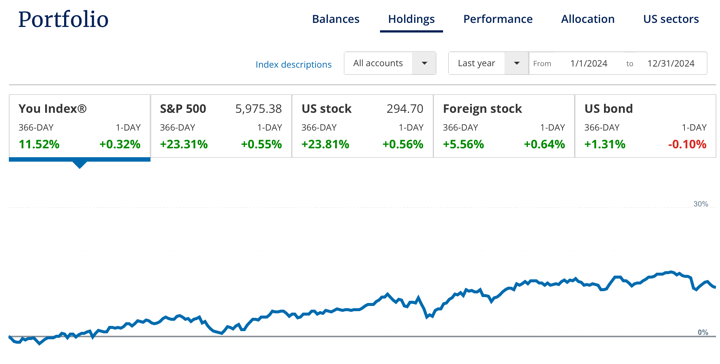
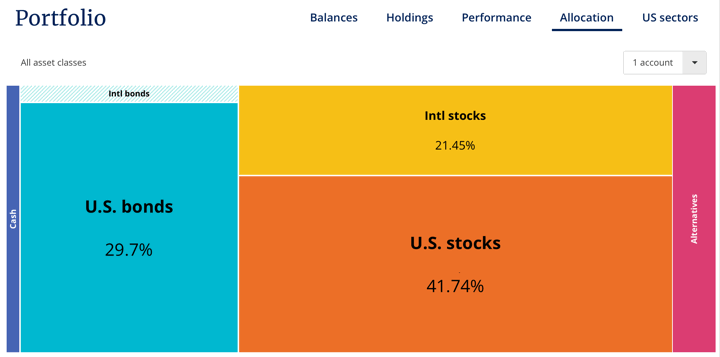
I own broad, low-cost exposure to productive assets that will provide long-term returns above inflation, distribute income via dividends and interest, and offer some historical tendencies to balance each other out. I have faith in the long-term benefit of owning all of the best businesses worldwide, as well as the stability of high-quality US Treasury debt.
I let my stock holdings float relatively close to the total world market cap breakdown, and it is now at ~65% US and ~35% ex-US. I do add just a little “spice” to the broad funds with the inclusion of “small value” factor ETFs for US and Developed International stocks as well as diversified real estate exposure through US REITs. But if you step back and look at the big picture, this is my simplified target portfolio:
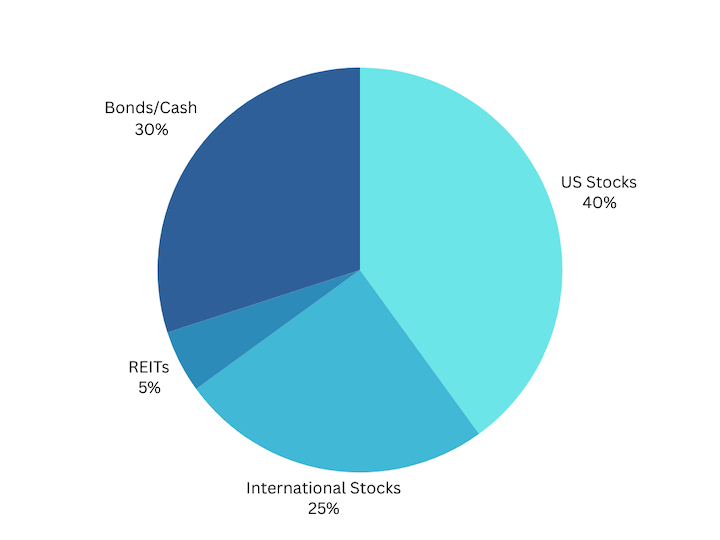
By paying minimal costs including management fees, transaction spreads, and tax drag, I am trying to essentially guarantee myself above-average net performance over time.
The portfolio that you can hold onto through the tough times is the best one for you. Every asset class will eventually have a low period, and you must have strong faith during these periods to earn those historically high returns. You have to keep owning and buying more stocks through the stock market crashes. You have to maintain and even buy more rental properties during a housing crunch, etc. A good sign is that if prices drop, you’ll want to buy more of that asset instead of less. I don’t have strong faith in the long-term results of commodities, gold, or bitcoin – so I don’t own them.
I do not spend a lot of time backtesting various model portfolios, as I don’t think picking through the details of the recent past will necessarily create superior future returns. You’ll usually find that whatever model portfolio is popular at the moment just happens to hold the asset class that has been the hottest recently as well.
I have settled into a long-term target ratio of roughly 70% stocks and 30% bonds within our investment strategy of buy, hold, and occasionally rebalance. My goal has evolved to more of a “perpetual income portfolio” as opposed to a “build up a big stash and hope it lasts until I die” portfolio. My target withdrawal rate is 3% or less. Here is a round-number breakdown of my target asset allocation along with my primary ETF holding for each asset class.
- 35% US Total Market (VTI)
- 5% US Small-Cap Value (VBR/AVUV)
- 20% International Total Market (VXUS)
- 5% International Small-Cap Value (AVDV)
- 5% US Real Estate (REIT) (VNQ)
- 15% US “Regular” Treasury Bonds or FDIC-insured deposits
- 15% US Treasury Inflation-Protected Bonds or I Savings Bonds
I do let things wobble a bit so I don’t have to keep rebalancing. Also, I have limited tax-deferred space for TIPS so I own less than I might otherwise. So the bonds is closer to 20% Treasuries and 10% TIPS.
Performance details. According to Empower, my portfolio went up around 11.5% in 2024. The S&P 500 went up 23.3% in 2024, while the US Bond index went up around 1.3%. Another year of relative underperformance in international stocks in the books.
Overall, we spent some of our dividends/interest and also made some 401k/IRA contributions with income to take advantage of tax-deferred opportunities. We no longer have the crazy savings rate of our 20s and 30s. Owning stocks continues to reward long-term investors. Out of curiosity, I generated a Morningstar Growth of $10,000 Chart for the Vanguard LifeStrategy Growth Fund (VASGX) which holds a static 80% stocks and 20% bonds and most closely mimics my portfolio since 2005, roughly when I started investing more seriously and started this blog. A very rough approximation is to expect your money to double every decade (Rule of 72). The money that I invested 20 years ago has indeed roughly doubled twice (4X).
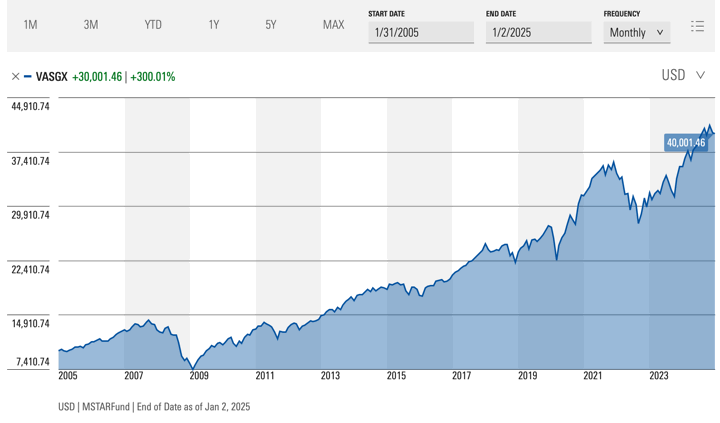
I’ll share about more about the income aspect in a separate post.
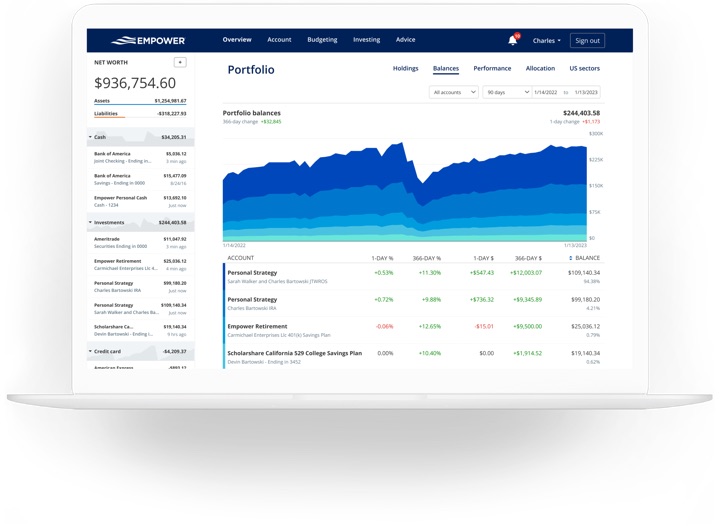
 The Best Credit Card Bonus Offers – 2025
The Best Credit Card Bonus Offers – 2025 Big List of Free Stocks from Brokerage Apps
Big List of Free Stocks from Brokerage Apps Best Interest Rates on Cash - 2025
Best Interest Rates on Cash - 2025 Free Credit Scores x 3 + Free Credit Monitoring
Free Credit Scores x 3 + Free Credit Monitoring Best No Fee 0% APR Balance Transfer Offers
Best No Fee 0% APR Balance Transfer Offers Little-Known Cellular Data Plans That Can Save Big Money
Little-Known Cellular Data Plans That Can Save Big Money How To Haggle Your Cable or Direct TV Bill
How To Haggle Your Cable or Direct TV Bill Big List of Free Consumer Data Reports (Credit, Rent, Work)
Big List of Free Consumer Data Reports (Credit, Rent, Work)
Are you rethinking your 25% allocation to International given it has been a drag on the earnings you could have had with just US holdings–year after year?
Of course I’d like more money than less, but mostly my asset allocation has adjusted with the relative performance.
The US/rest of World split has gone from something like 45% US/55% World ex-US early in my investing to over 65%/35% today. I usually try to maintain match that with a slight home bias so having 67%/33% is like moving from equal parts (1:1) holding now twice as much US as rest of the World (2:1). If the US manages to maintain this outperformance in the future, then one day I might have 75%25% (3:1) or even 80%/20% (4:1). But is that really likely? A lot of it has been P/E ratio growth, that may hold but it can’t increase forever. I simply don’t know, so I plan to let letting it float. Another 25 years from now, I we’ll see what the new split is. Diversification means always owning the losers.
That 11.8 looks like the blended return of those indexes…
Thanks, I am having difficulty with Empower showing me my performance on the Performance tab, but I can see it on the Holding tab, I think. I’m not positive it is including dividends.
The allocations image is showing some $ values, may want to erase though if concerned.
Thanks, fixed!